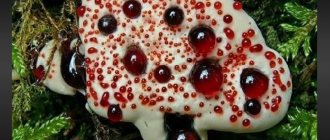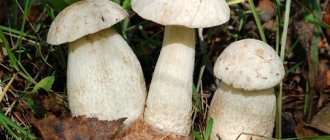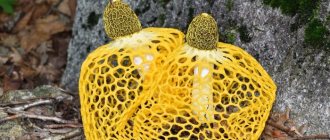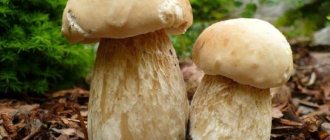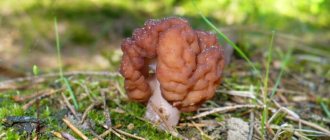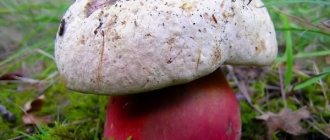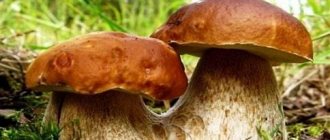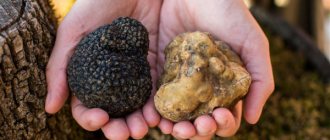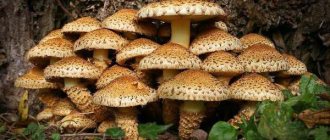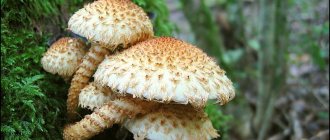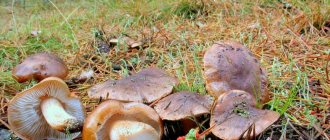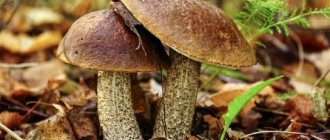It happens that nature suddenly opens its storerooms, and incredible, even creepy plants appear into the light of day, about which few people know. For some of them you don’t need to climb high mountains or descend into the depths of the sea. Even the mushrooms themselves are mysterious and unusual. When most people mention them, they imagine a forest in which a boletus or milk mushroom flaunts on a thick stalk among the foliage. But the mushroom kingdom is huge and diverse: from microscopic to huge specimens.
However, among them there are also especially unusual ones. Russian forests in this sense are quite harmless. Here you can find ordinary mushrooms, edible and inedible. But if you happen to find yourself in a tropical forest, you can come across something that is also called mushrooms, but causes the only desire - to run away.
What is it about? Almost footage of their “Aliens”
And you can’t believe your eyes anymore, because everything that’s happening seems like a movie from science fiction. One minute there was a tuber lying on the ground, a little like a potato, and a moment later red fleshy tentacles released from it lay on the grass. And all the time it seems that these cute limbs are going to grab you. The spectacle, frankly speaking, is terrible.
But there's no need to worry. Because this terrible creature is actually an earthly mushroom. This is how the Archer’s flowertail (Clathrus archeri) from the genus Latticula of the Veselkov family, the “devil’s fingers” mushroom, is born. Who would have thought that its appearance is so inconsistent with its name.
And yet it is a mushroom!
Anthurus Archer has many names, but the most popular among them is “devil fingers”. These are the same tentacles of red shades, on which, like suction cups from the tentacles of an octopus, there are black spheres (hence another name - “octopus mushroom”). These black balls are gleba, emitting a rotten smell of rotten meat.
The aged "devil's fingers" mushroom is even scarier. Its bright color disappears, and what remains is a monstrous pale hand, as if it had crawled out of the grave. The aroma they emit is akin to the smell of rotting flesh. With it, it attracts insects that scatter fungal spores over long distances.
Where did this creepy mushroom come from?
How and where did the creepy “devil’s fingers” mushroom spread? Where does it grow? It was first described in Tasmania and very soon discovered in Australia, followed by New Zealand, Africa, Central and Southeast Asia, South America, St. Helena and Mauritius.
Europe considers him an alien. Nobody knows the exact time it was brought here. It is believed that it was accidentally introduced into France sometime between 1914 and 1920 from Australia, and possibly New Zealand, along with wool supplied to the textile industry. Or maybe his disputes came here with Australian soldiers who took part in hostilities on French territory in the First World War. Even if he was brought in by accident, he acclimatized quite successfully. This is how amazing the Australian “devil’s fingers” mushrooms look.
Snapdragon
Flowers of the annual plant Snapdragon
(
Antirrhinum majus
) resemble an open lion's mouth.
Several legends are associated with the plant. According to one of them, the house where snapdragon grows will be free from witchcraft and curses. According to another belief, a woman who eats this plant will have beauty throughout her life. However, you should not do this, as it is poisonous.
.
In late summer, when the petals wither and fall off, the achene is exposed and the seeds fall from three holes, giving the plant a skull-like appearance
.
And here's the result
Since the mid-30s, terrible finds have been discovered in Europe. They are concentrated mainly in the Vosges Mountains in eastern France, almost close to the borders of Switzerland and Germany, crossed them and spread further: in Germany (in 1937), Switzerland (in 1942), England (in 1945), Austria (in 1948), Czech Republic (in 1963). After some 60 years, the mushroom has already mastered the Baltic coast. This happens quite quickly. Devil's fingers, the world's most terrifying mushroom, are being encountered more and more often from Spain in the west to Ukraine and Poland in the east, from Scandinavia and Great Britain in the north to the Balkan countries in the south.
The first find on the territory of the former Soviet Union was noted in Kazakhstan (Aktobe region) in 1953, the next one in the Ukrainian Carpathians in 1977. This tropical predator is seen, although extremely rarely, in Russia. It is possible that it was brought here with soil and seedlings, but in some southern and central regions it has successfully established itself. Thus, isolated cases when Anthurus Archer caught the eye of mushroom pickers were noted in the Sverdlovsk (1978) and Kaluga regions (2000s).
The devil's fingers mushroom is accustomed to living among mixed and deciduous forests, where it successfully takes root on humus soils and rotting wood among the sands of desert and semi-desert. It begins to bloom from August to the end of October. The mushroom is quite rare, but it can grow in considerable quantities if weather conditions permit.
Devil's fingers mushroom: description
The Anthurus Archer mushroom can even be called cunning. And all because at first he pretends to be a whitish toadstool, the most ordinary and unremarkable. This applies to the stage when it is egg-shaped, 4 to 6 centimeters in diameter. When mushrooms are scattered throughout the forest, you can think anything about them, even mistake them for an alien creature.
But in fact, the egg has a multilayer structure:
- peridium – top layer;
- mucous membrane, which in composition resembles jelly;
- the core, which consists of a receptacle (what will become the red petals) and in the center a gleba (spore-bearing layer).
But time passes and they begin to bloom. The spectacle is no less creepy when up to eight petals literally erupt from the bursting shell of the egg. At first they are fused at the top, but soon they very quickly separate and resemble blades or even tentacles, like an octopus.
By the way, the metaphor “helicopter” would be better. Can you imagine an octopus traveling from one continent to another, as Archer's Anthurus has done over the last hundred years? Eventually the mushroom takes on the characteristic shape of a star or flower about 15 centimeters in diameter. And inside the petals resemble a wrinkled, porous sponge, by the way, quite brittle, with dark spots, like the suckers on an octopus. They are covered with spore-bearing mucous gleba, which is precisely the source of the intolerable stench. But it successfully attracts flies. And already the insects are carrying the spores of this monster around on their paws. Of course, the method chosen for dispersing spores is not the most common among other mushrooms, but it is certainly effective.
The interesting devil's fingers mushroom has no obvious stem. And after emerging from the egg, it lives only two or three days, after which it withers and dies. But this short period is enough for it to fulfill its function - transferring the seed, so that the race continues.
Sublime psychotria - “hot lips”
Tree Psychotria sublime
(
Psychotria elata
) grows in the tropical rain forests of Central and South America.
From December to March, the plant's bright red bracts look like lips wearing lipstick
.
The red color lures pollinators such as hummingbirds and butterflies. When the bracts open, star-shaped inflorescences and oval berries appear inside.
Hot lips are a popular gift in Central America to express love.
The bark and leaves of the tree are used to treat ear pain, skin rashes and coughs.
. Natives of Panama use the plant to treat breathing problems. Unfortunately, deforestation has led to the fact that psychotria is now on the verge of extinction.
Devil's fingers mushroom - edible or not?
Indeed, an interesting question. So is it possible to eat the wonderful creation “devil’s fingers”? You can eat mushrooms! There was even one daredevil in California who took a sample at the egg stage. Its taste turned out to be, to put it mildly, quite unpleasant, and the sensations after such a tasting were not the best, but memorable.
If you find yourself in a survival situation, for example, in the desert, and there is no other food, then eat it. Don't die of hunger! In all other cases, consider it inedible.
Almost relatives
Despite all the originality and dissimilarity from other forest inhabitants, there are species that are quite close and similar:
- Java flowertail (Pseudocolus fusiformis syn. Anthurus javanicus). You can meet it in the forests of the Primorsky Territory. Visit the Nikitsky Botanical Garden (perhaps somewhere else) and find it in some tub where one of the tropical plants is planted. It differs from Archera in having petals converging at the top.
- Red Latticewort (Clathrus ruber). This mushroom is very rare.
- Common Veselka (Hallus Impudicus). There is considerable similarity in the condition of the egg. It differs from the “fingers” only in the color on the cut; in the Veselka it is green.
Similarities with other species
The species in question does not have a leg, as such, and this characteristic feature allows it not to be confused with its small counterparts. For example, another flower mushroom called the fusiform flowertail is very similar to the cuttlefish. But it is worth noting that in addition to the presence of a stalk, it has a number of characteristic differences, including the paler color of the main fruiting body, as well as the connection of petals in its upper part that maintains its integrity throughout the entire life cycle.
The genus of Latticeworts also has other bright representatives, albeit less similar to the devil’s flower. Among them, it is worth highlighting varieties that form dense inflorescences of a rich ocher color, such as Java anthurus, as well as red clathrus, reminiscent of a small holey bubble of scarlet, coral or blood red color.
We should not forget the common veselka with its dense phallic base and double cap with a graceful mesh veil flowing down.
It should be noted that the likelihood of encountering these spectacular mushrooms is much lower, since they prefer southern countries with a humid subtropical and tropical climate (the exception is the “Russified” Veselka).
Life of the Devil's Fingers on the World Wide Web
The Anthurus Archer mushroom, or “devil's fingers,” is so unusual that everyone who encounters it strives to capture such a wonderful sight. And the Internet is literally filled with a variety of photographs of this seemingly monster, but in fact just a mushroom in all stages of its short life: from eggs scattered throughout the green forest, to a pale, almost white “dead man’s hand” lying on the ground, as if bursting out of the grave through the earth's thickness.
The very first appearance of his photographs on the Internet caused serious controversy among users of the World Wide Web. Various assumptions were made: that the creature is of extraterrestrial origin, and the photo shows eggs in which a parasitic embryo develops, or that this is the most ordinary photomontage, and not reality at all.
Interesting Facts
Named after the Irish mycologist William Archer, whose name translates as “castle.” Depending on the environment, the color may change slightly from scarlet and coral to purple-pink.
By the way, it almost has a namesake called “dead man’s fingers,” which belongs to the department of marsupial fungi of the class Sordariomycetes from the family Xylariaceae, genus Xylaria. Although it is impossible to confuse them externally.
The devil's fingers are still little studied. More or less detail was written about it in the American mycological journal in a scientific publication (1982) by Californians David Arora and William Burke.
Different “faces” of Anthurus Archer
Those looking at this earthly wonder have a variety of associations. Some people see cacti in it, others see cuttlefish, for others it resembles a star or a flower, and for others octopus tentacles immediately come to mind.
Hence the numerous and such different names with which it is given:
- "devil's fingers"
- "damn fingers"
- "damn egg"
- "mushroom star"
- "stinking octopus horn"
- "cuttlefish mushroom"
- “stinking horn.
Poisonous plant "Doll's eye"
Berries " doll's eye"
"(
Actaea pachypoda
) were named so for a reason, since these white oblong berries look very much like
bulging eyes
.
The ominous appearance is a warning as the plant contains a carcinogenic toxin
, which immediately puts the heart muscle to sleep.
If consumed internally, it can lead to heart attack and even death. The black spot or “pupil” is a scar that appears on the pointed end of the stem during the initial stage of growth.
Each berry has several seeds, but most birds are immune to the toxins. They eat the berries and excrete the seeds in their excrement. Leaves, stem and roots, and white flowers may cause skin blisters
, and when consumed orally, cause intestinal inflammation.
A large number of berries can kill a person
.
Notes on a monster's journey through Europe
- Ukraine. Anthurus Archer is listed in the Red Book as an endangered species. As has been the custom since 1977, reports of a meeting with him are still received today from the Transcarpathian, and less often from the Ivano-Frankivsk regions. Almost all finds were recorded in the forest zone, on mountain slopes at an altitude of up to 800 meters above sea level.
- Germany. The Anthurus archer's mushroom, or "devil's fingers", has been found here quite often since it was first discovered in 1937. And yet it is listed in the Red Book.
- Czech Republic, Karlovy Vary region. Near the town of Hranice, in a small protected area, the rarest species of plants and animals are hidden. And although the average annual temperature here is only about 6ºС, this did not prevent the brainchild of the tropics, Anthurus Archer, from settling in these parts. And rotting wood is enough for him to feed and grow.
- Great Britain. Here the “devil's fingers” mushroom (Anthurus archer) is a rare find. And the only species with which it can be confused is Clathrus ruber. But there is confidence that the consequence of global warming may be its wider distribution. You can be sure that it will not go unnoticed for long. This is guaranteed by its terrible appearance and disgusting smell.
By the way, the Anthurus archeri mushroom, or “devil's fingers,” was described in 1860 by the British mycologist Michael Joseph Berkeley and gave it the name Lysurus archeri. This wonderful mushroom was later assigned to the genus Clathrus by another Briton, Donald Malcolm Dring, in his monograph (1980). This creation of nature became known as Anthurus Archer, but the name “devil’s fingers” is most popularly known.
False morels
Morels are highly prized by culinary experts and can be quite expensive when in season. However, amateurs cannot always distinguish a real morel from a false one, which is very toxic.
.
About 20 percent of deaths
associated with mushroom consumption are due to false morels.
Some less toxic types of false morels are prepared in Scandinavian countries, where they are boiled and washed several times. Despite this, the carcinogen hydrazine gyromitrin
remains in small quantities and is especially dangerous for pregnant and lactating women.
Gyromithrin poisoning includes symptoms such as diarrhea, headache, nausea and vomiting
, and in large quantities it can lead to
liver damage
, including the need for a liver transplant.
True morels have a lattice-like surface of the cap with depressions and irregularities. False morels have a wavy, lobed surface that resembles the cerebral cortex
in humans. In addition, the cap of false morels is not completely attached to the stem and, when cut, is filled with white pulp, whereas real morels are hollow inside.
